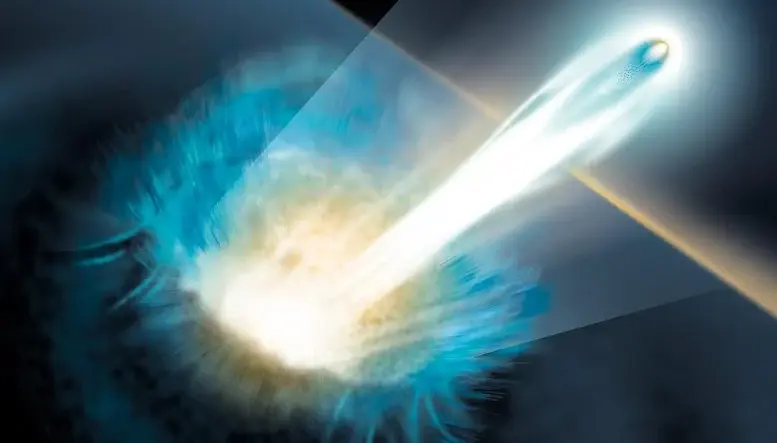Scientists set a new energy record for next-generation proton accelerators
Helmholtz -Zentrum Dresden-Rossendorf (HZDR) has made significant progress in laser plasma acceleration. Using an innovative method, the research team was able to significantly exceed the previous record for proton acceleration. For the first time, they have reached energies that until now seemed possible only in much larger objects. As the research team reports in the journal Natural Physics, Promising applications in medicine and materials science are now much more likely.
Compact and energy-efficient accelerators
Laser plasma acceleration opens interesting perspectives. It promises more compact and energy-efficient vehicles compared to traditional accelerators because the new technology uses lasers to accelerate particles rather than using powerful radio waves to move them.
The principle is that extremely short but high-intensity laser pulses are fired at a thin foil. The light heats the material so much that countless electrons emerge from it while the atomic nuclei remain in place. Since electrons are negatively charged and atomic nuclei are positively charged, a strong electric field is created between them for a short time. This field can launch a proton pulse just a few micrometers at energies that would require much greater distances with conventional accelerator technology.
However, this technology is still in the research phase: so far it has only been possible to reach proton energies of up to 100 MeV with the help of extremely large laser systems, of which there are very few in the world. The team of HZDR physicists Carl Zeil and Tim Ziegler took a new approach to achieve the same high accelerator energy with smaller laser units and shorter pulses.
They use the laser flash feature, which is often seen as a disadvantage. “The impulse energy doesn’t kick in right away, which would be ideal,” says Ziegler. “Instead, a bit of laser energy is rushing forward, sort of like a vanguard.”
Suddenly Transparent
This light, which stands out in the new concept, plays an important role. When it hits a specially made plastic foil in the vacuum chamber, it can change it in certain ways.
“When exposed to light, the foil expands, heats up and becomes thinner,” explains Ziegler. “The foil effectively melts when heated.”
This has a positive effect on the primary pulse that immediately follows: the foil, which would otherwise largely reflect light, suddenly becomes transparent, allowing the primary pulse to penetrate deeper into the material than in previous experiments.
“As a result, a complex set of acceleration mechanisms is triggered in the material, causing the protons in the film to accelerate much more strongly than with our DRACO laser,” Ziegler said. To put it in numbers: The facility used to reach a proton energy of around 80 MeV, now it can produce 150 MeV, almost twice as much energy.
To achieve this record, the team had to conduct a series of experiments to approach ideal interaction parameters, such as the optimum thickness of the films used. Analyzing the measurement data, the research team discovered that the accelerated particle beam has another nice property: the high-energy protons exhibit a narrow energy distribution, meaning that they are all at approximately the same speed, figuratively speaking – an advantage for further applications – which leads to high Uniform proton energies are extremely beneficial.
Advantage: energy efficiency
One such application is the investigation of new radiobiological concepts for precise and precise treatment of tumors. In this method, very high doses of radiation are used for a very short period of time. These studies have so far mostly used large-scale conventional therapeutic accelerators, which are only available in a few centers in Germany and are, of course, a priority in the treatment of patients.
The new HZDR procedure now makes the use of compact laser systems more feasible, allowing additional research groups to access these studies and facilitate radiation scenarios that conventional systems cannot provide.
“What’s more, modern plants require a lot of power,” says Ziegler. “They could be much more economical based on laser plasma acceleration.”
This procedure can also be used for efficient neutron production. Laser flashes can be used to produce short, intense pulses of neutrons for use in science and technology as well as in materials analysis. And here plasma accelerators promise to significantly expand the previous areas of application. But above all, scientists want to develop the new method and understand it better. Among other things, they want to collaborate with other laboratories to control the process more precisely and make the technology more accessible. Other records are also on the agenda: energies above 200 MeV seem quite possible.








![vivo expands the Y200 series with three new models [Video] vivo expands the Y200 series with three new models [Video]](https://cdn.webtekno.com/media/cache/content_detail_v2/article/144049/vivo-y200-gt-y200-5g-tanitildi-1715873125.jpg)




